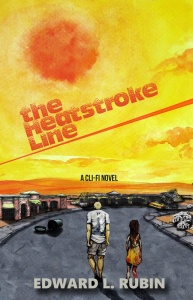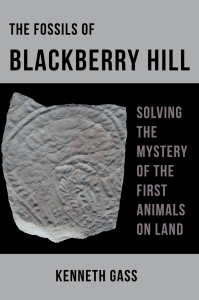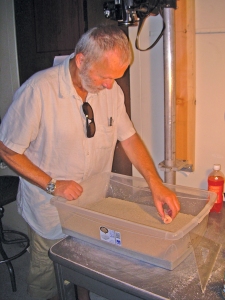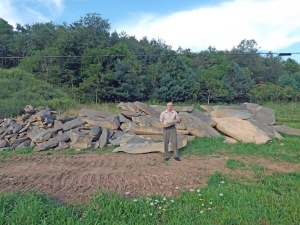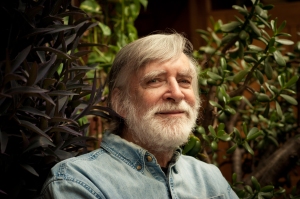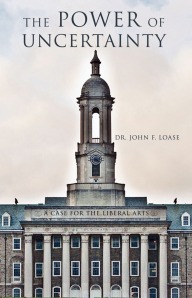WOODS HOLE, Mass. — Sunbury Press has released the climate fiction (Cli-Fi) thriller Ice Canyon Monster, Keith Rommel’s novella about the consequences of global warming.
What Others Are Saying:
When a Greenland shaman decides to fight back against global warming and the harm it is doing to his people, a powerful series of events unfolds in this cli-fi thriller. Keith Rommel knows how to spin a great yarn!
– Dan Bloom, The Cli-Fi Report
About the Book:
 HUNGER WILL BRING ANYTHING TO THE SURFACE …
HUNGER WILL BRING ANYTHING TO THE SURFACE …
The Eskimo people of Greenland have grown tired of the damage being done to their country. Global warming from emissions that stem from the shipping lanes that run between Canada and Greenland has made people that live close to the coast sick. Cancer, asthma and as many as 5,000 deaths a year have been attributed to this pollution. A single cargo ship in one year burns more emissions than 50 million gasoline burning vehicles.
When Akutak, a Greenlandic Shaman Eskimo, decides to take action against the things that are destroying his country, he uses the ancient arts and creates a tupilak and with it and conjures a curse. Designed in the form of an octopus, this Goliath is going to become Greenland’s guardian and do everything within its power to stop the erosion of the ice sheet.
But not everyone sees the Tupilak Octopus as a champion and they seek to destroy it. But the only way to destroy it is to conjure something more powerful and Akutak may be Greenland’s most powerful shaman.
This novelette is part of the Cli-Fi movement and contains stunning facts surrounding Greenland and the danger this beautiful country faces from big oil to overused shipping lanes. Akutak and his Tupilak Octopus has one message: leave Greenland alone! – Read this highly educational novel with a great fiction story intertwined within the startling facts.
Excerpt:
Akutak knelt down on the hard, cold surface of a mountainous ice sheet that overlooked the valley’s deep ice canyon. A large rivulet carried fast-moving glacial water, and the sound of the running river was loud enough to reach Akutak even at this altitude.
Located in the interior of Greenland, beneath the ice sheet and river flow, was a canyon that snaked around and reached the Petermann Glacier on the northern coast. The water melt also flowed beneath the ice and was released into the Arctic Ocean.
True to old tradition almost lost throughout the centuries, Akutak wore the skins of animals that were captured for their meat. The skins were sewn together by his wife. She was a skilled seamstress and made him kamiks, trousers and anoraks, gloves and a hat. It was her skill that protected him against the harsh elements and kept him alive. Knowing she made the clothing, the frigid cold was of no concern; in Greenland it is said a man is what his wife makes him.
Opening the flap of an animal skin sack that was slung over his shoulder, he peered inside and saw what he had placed there before he left home at first light.
The wind whipped and reminded Akutak that where he was was inhospitable and unwelcoming. But still, he continued to move forward with the plan that took him nearly two years to complete; shrouded in silence even to his kin. What he created and what he was about to do was never shared with anyone else. It couldn’t be because that was the way.
He carefully reached into his sack and pulled out a hand-sized tupilaq. This carefully handmade avenging monster was created to keep people away from his native land, which was shrinking each year because of global warming.
The shaman began to chant in his native tongue of Inuit. He called forth in a repeated rhythmic sound, reciting his desire to make those who caused it to pay for what his country was suffering. He wanted to instill fear and summoned a beast, large and unstoppable, filled with the rage of his ancestors. This beast would do terrible things to keep people away from Greenland.
He looked at the tupilaq, made the traditional way to ensure its effectiveness; the design represented exactly what he foresaw as being the bringer of fear and order, death, and a reluctance to challenge the waters around Greenland. Made from carved bone, dried and stretched skin, woven hair and sinew, the totem even contained parts from dead children.
Drawing himself close to the ridge, each footfall carefully placed so as not to plunge to his death, his chant continued as he looked over the edge and into the clear water. He held onto the tupilaq, looked at his work one last time to make sure it was good enough, and then held it out and released it over the flowing water.
About the Author:
Keith Rommel is the author of numerous fiction thrillers, best known for his Thanatology Series, which includes The Cursed Man, and The Lurking Man, both of which are becoming Hollywood movies. Keith is also a screenwriter.
Ice Canyon Monster
Authored by Keith Rommel
List Price: $9.99
5″ x 8″ (12.7 x 20.32 cm)
Black & White on Cream paper
136 pages
Sunbury Press, Inc.
ISBN-13: 978-1620067222
ISBN-10: 1620067226
BISAC: Fiction / Sea Stories
Also available on Kindle
For more information, please see:
http://www.sunburypressstore.com/Ice-Canyon-Monster-9781620067222.htm

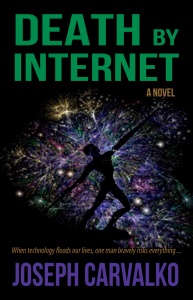


![IMG_20140518_201141[1]](https://albertandisaac.files.wordpress.com/2016/02/img_20140518_2011411.jpg?w=300&h=225)
